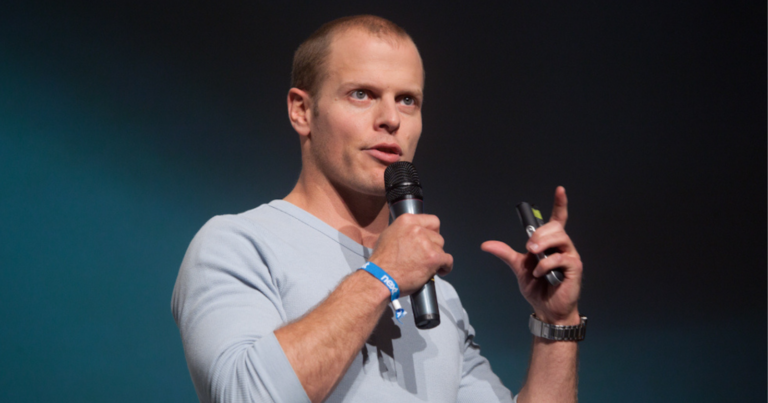Have you ever found yourself wondering what it would be like to structure your daily schedule based on the teachings of one of the world’s most renowned productivity experts? If so, you’re not alone. Many of us have delved into the works of Tim Ferriss, particularly his book The 4-Hour Workweek, in hopes of uncovering the secrets to a more efficient and fulfilling workday.
As someone who has experimented with Ferriss’s productivity strategies over the years, I can attest to the transformative power of implementing his principles into your daily routine. While it may not be feasible to outsource every aspect of your life, you can certainly shape your workday in a way that optimizes results and allows for more time to focus on what truly matters.
At Small Biz Technology, we’re passionate about merging productivity hacks with real-world practicality, and few people exemplify this balance better than Tim Ferriss. Below, I’ve outlined a hypothetical workday inspired by Ferriss’s principles from The 4-Hour Workweek and other productivity hacks he frequently advocates for. While everyone’s ideal schedule will vary, these concepts capture the essence of Ferriss’s approach: maximizing efficiency, prioritizing ruthlessly, and creating space for meaningful pursuits.
6:00–7:00 AM: Kickstart your day with a streamlined routine
Ferriss emphasizes the importance of establishing a morning routine, though he advocates for brevity over complexity. The goal is to engage in a concise set of actions that boost energy and clarity. This may include a brief meditation, a quick workout, and jotting down thoughts in a gratitude journal. By keeping these activities short and focused, you can prime your mind and body for the day ahead without sacrificing valuable time.
7:00–9:00 AM: Dive into your most impactful task first
Next, dedicate two uninterrupted hours to what Ferriss refers to as “deep work.” By identifying the one or two tasks that yield the greatest results in your work or business, you can prioritize them when your focus is at its peak. Avoid distractions like checking emails or social media, as they can derail your productivity. By tackling your most crucial task early on, you’ll set a tone of accomplishment that carries you through the remainder of the day.
9:00–9:30 AM: Take a micro-break and embrace a mini-retirement mindset
Ferriss popularized the concept of “mini-retirements,” which can be incorporated into your daily routine as brief breaks to recharge. After a period of intense focus, step away for 30 minutes to clear your mind. Whether it’s a walk outdoors, a quick workout, or a moment of relaxation, allowing your brain to rest can enhance long-term productivity. Research has shown that taking short mental breaks throughout the day can boost motivation and focus.
9:30–11:00 AM: Group your less critical tasks together
Ferriss advocates for batching similar tasks to minimize context-switching and maximize efficiency. Following your deep work session and break, use this time to address smaller tasks that don’t require immediate attention but still need to be completed. This could include responding to emails, making brief phone calls, or handling administrative duties. By tackling these tasks in one block, you can maintain a sense of continuity and prevent energy drain throughout the day.
11:00 AM–12:00 PM: Engage in a fear-setting exercise
Ferriss introduced the concept of fear-setting as a critical practice for decision-making. Rather than solely focusing on goals, identify your fears surrounding a particular plan or aspiration and analyze them methodically. By addressing potential worst-case scenarios and developing strategies to mitigate them, you can alleviate anxiety and make more confident choices. This exercise can pave the way for bold decision-making and greater success.
12:00–4:00 PM: Refuel, recharge, and delegate where possible
After completing demanding cognitive tasks, use your lunch break not only to nourish your body but also to reset mentally. Step away from your workspace, enjoy a nutritious meal, and engage in activities that promote creativity and relaxation. Additionally, assess your task list for opportunities to delegate or outsource responsibilities. By determining which tasks are best suited for delegation, you can free up time for strategic thinking and higher-value activities.
4:00–6:00 PM: Wrap up the day with reflection and planning
As the workday draws to a close, dedicate a final burst of focus to tying up loose ends and reflecting on your accomplishments and challenges. Take note of what went well, what could be improved, and how you can optimize your approach for the following day. By engaging in structured reflection, you can extract valuable insights and refine your daily routine for enhanced productivity and fulfillment.
In conclusion, adopting a Tim Ferriss-inspired schedule isn’t about adhering strictly to a four-hour workweek but rather about designing a day that maximizes output while preserving mental energy. By focusing on tasks that yield the greatest impact, taking strategic breaks, and delegating where possible, you can optimize your workday for peak performance. Whether you incorporate one element or the entire schedule, remember that experimentation and adaptability are key to finding what works best for you. Embrace the mindset of optimization, and witness how it transforms not only your work but also your overall outlook on life.
Until next time, embrace the principles of Tim Ferriss and embark on a journey of productivity and personal growth.

